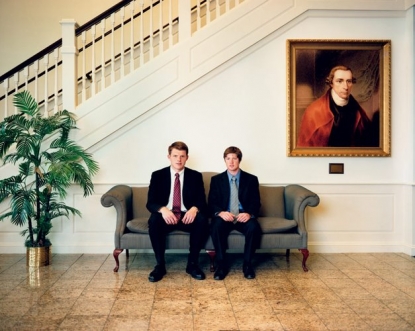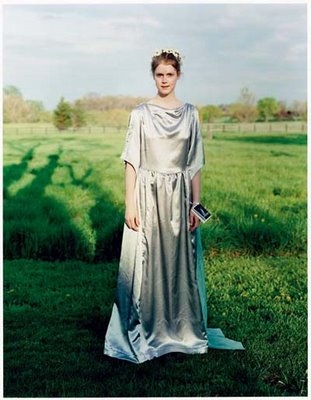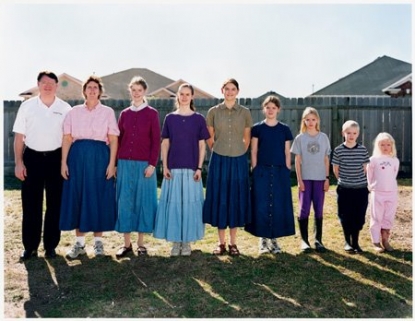Feature: Reviews
Right: Portraits from the Evangelical Ivy League
By Jona Frank
San Francisco: Chronicle Books, 2008
Jona Frank’s photography book titled Right takes a close look at Patrick Henry College (PHC), an evangelical Christian school that was created to welcome the first generation of home-schooled teenagers into the university environment. Frank’s previous book, High School examined the different subcultures that teenagers try out as they’re trying to formulate individual identities. In her essay for Right, she states that she is investigating a similar state of becoming by capturing the “struggle with the pivotal moment between exploration and discovery.”
PHC is a relatively new establishment invested in the belief that many more generations will follow. Located just outside of the Washington DC beltway, within close proximity to the nation’s capitol, it serves the binary role of not only preserving the extremely pious atmosphere in which these kids were raised, but also equipping them with a rigorous academic training to help them claim important posts in government and the culture industry. PHC’s founder and president Mike Farris is quoted in Right several times with the vision that a PHC student will one day receive an Oscar for best director. This student (always referred to as “he”) will call his former PHC roommate to announce the news, and this mate will pick up the call from his Oval Office in the White House.
Photographs of school rituals involving lots of prayer are accompanied by portraits of students appearing to wear their Sunday best. But an introductory essay by Hannah Rosin – whose writings about PHC initially inspired Frank to visit the school – compares these students’ daily habit of dressing up in suits to “the way most college kids wear sweatpants.” Frank makes an astute comment on the school’s revisionist Christian values in her portraits of students on their way to the spring formal, the “liberty ball.” Posed against picturesque fields of green, they appear to be dressed in period costume. One girl’s homemade, floor length satiny frock would look at home in a John Singleton Copley painting. Another boy’s double rows of gold buttons and gold sash seem to quote the Civil War era. Frank also photographs a selection of the teenagers in the environments they grew up in. Photos of huge families with stay at home moms schooling armies of siblings offer clues as to the values these kids are expected to follow. Right also contains examples of students’ homework, interviews with the students themselves, and essays by Frank, and curator Colin Westerbeck, in addition to Rosin’s.
Upon first glance, Right appears to offer views of an oppressively conservative culture structured for the shaping of young minds. Yet Frank manages to locate the individuality of her subjects within the school’s code of uniformity. Voices of dissent toward the school administration are even revealed in an interview between Frank and one particularly bright and ambitious student. Together, the photographs and texts coalesce into a tense narrative that suggests a culture clash between Farris’ grand vision and what these kids can actually achieve in life after college. This narrative gives the book a political edge and saves it from unfolding like just another coming of age story. As subject matter, PHC makes for a fascinating case study, and Right examines the most noteworthy subjects of this exclusive environment with surprising candor and empathy.



